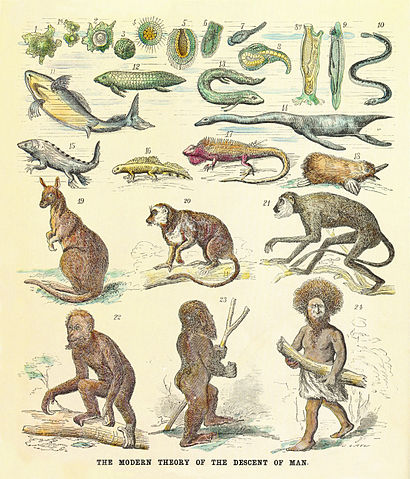
The human pedigree interpreted chain of being with living and fossil animals. Ernst Haeckel, Anthropogenie oder Entwicklungsgeschichte des Menschen (The Evolution of Man), 1874, posted by Petter Bøckman, Wikipedia, Public Domain. The figure show the human pedigree as a Great Chain of Being, illustrated by modern and fossil species. Legend: 1 Amoeba, 1a Asexual reproduction (amoeba dividing), 2 Sexual reproduction (cell with spore), 3 Multi-cellular organism (early embryonic stage), 4 Muliticellular organism with three germ layers (blastula), 5 Organism with primitive mouth (gastrula), 6 Planaria, 7 Worm (leech), 8 Primitive chordate (tunicate larva), 8a Adult tunicate, 9 Lancelet, 10 Jawless fish (lamprey), 11 Cartilaginous fishes (shark), 12 Australian lungfish, 13 South American lungfish, 14 Aquatic reptile (plesiosaur), 15 Early amphibian (labytinthodont), 16 Modern amphibian (newt), 17 Reptile (iguana), 18 Monotreme (platypus), 19 Marsupial (kangaroo), 20 Prosimian (lemur), 21 Monkey (langur), 22 Ape (orangutan), 23 Ape-man (Pithecanthropus), 24 Modern human (a Papuan).